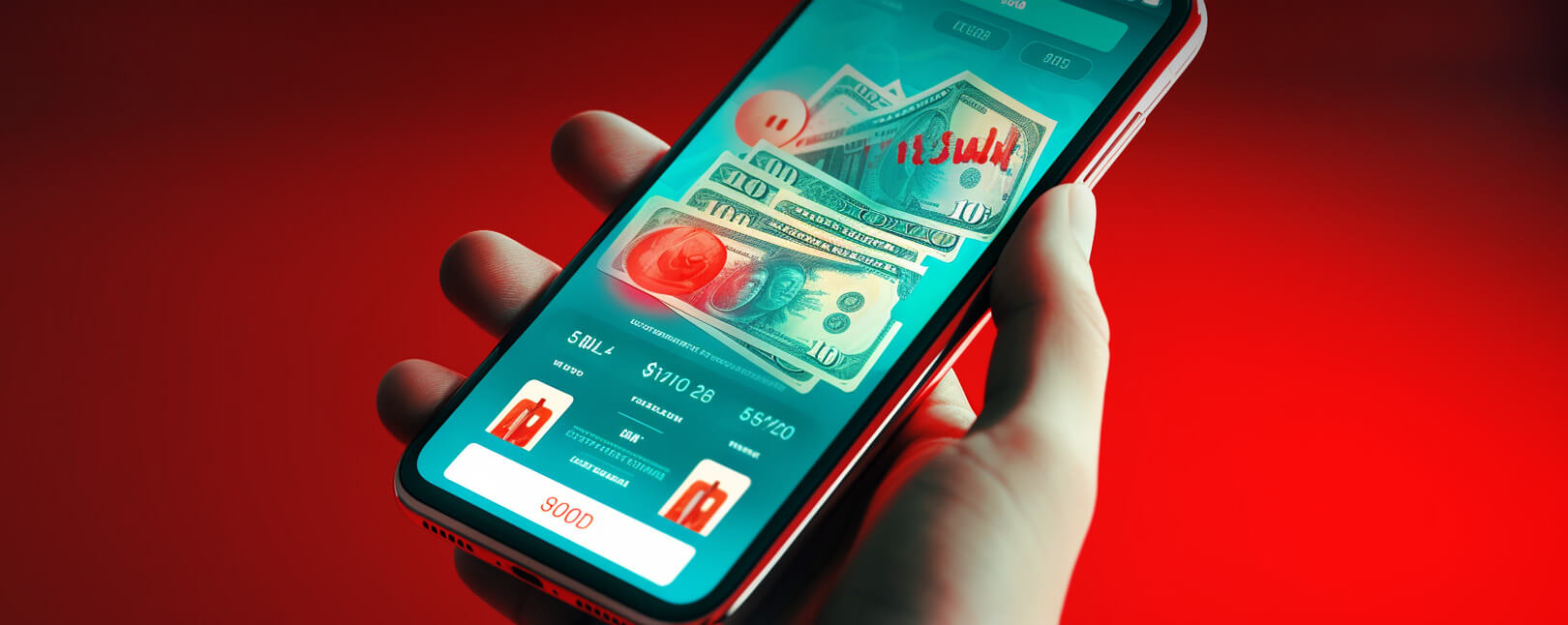10 Tips to Prevent In-App Purchase Chargebacks
Chargebacks, or forced payment reversals resulting from a customer dispute, are becoming an epidemic within the software and development sector.
Part of the problem is the overall upward trend in chargeback issuances across the board. On the other hand, key aspects of the electronics industry make it particularly susceptible to disputes. High-purchases, billing errors, and ease of access are all factors. This can create substantial challenges for app developers.
So, how do in-app purchase (IAP) chargebacks work? How can merchants prevent them? Let’s take a look.
Recommended reading
- What is the Zelle Dispute Process? What Should Victims Do?
- Venmo Chargebacks: How Do Disputes Work on Venmo?
- Bank of America Disputes: Here's What You Need to Know
- How Square Disputes Work | Rules, Protections & More
- Dropshipping Chargebacks | Causes & Tips to Prevent Them
- Types of Chargebacks | Common Claims & Why They Happen
In-App Purchase Chargebacks: At a Glance
An in-app purchase chargeback, or IAP chargeback, is the reversal of a payment made through a software application. The customer usually initiates the dispute through the bank that issued the card.
This action is typically taken in response to an issue reported by the cardholder. Receiving a defective product, unauthorized transactions, or other dissatisfaction with the purchase can all trigger chargebacks.
When a customer initiates a chargeback for an in-app purchase, the customer’s issuing bank investigates the claim to determine its validity.
Suppose the issuing bank finds the claim valid. In that case, they will file an in-app purchase chargeback against the merchant’s acquiring bank. They’re essentially reversing the transaction, refunding the customer, and debiting the seller's account. In this case, the merchant will be charged a fee, regardless of whether or not the chargeback is warranted.
Why Do In-App Chargebacks Happen?
We’re in an age where online shopping dominates and shapes customer expectations. Against that backdrop, chargebacks are a stark reminder of the importance of product quality, customer service, and overall transparency. App developers must recognize these potential pitfalls and work proactively to mitigate them.
On that note, here are some common reasons customers file for in-app purchase chargebacks:
How Do Chargebacks Impact the Software and Development Industry?
The more disputes that are filed, the more risky the brand appears. That leads to higher processing fees, stricter operating limitations, and more. There’s a ripple effect as well; in-app purchase chargebacks hurt the software industry as a whole.
Chargebacks can lead to:
Learn more about chargeback costsIn-app purchase chargebacks hurt everyone involved in the process, sometimes even the customers who file them. This is why it’s so important for app developers to keep ahead of the curve by implementing a few best practices to limit overall industry exposure.
10 Tips to Prevent In-App Purchase Chargebacks
Software and app developers must proactively address chargeback issues. The keys to this are improved communication, enhanced customer satisfaction measures, and effective dispute resolution when necessary.
Developers need to embrace a customer-centric approach focused on transparency and satisfaction. This proactive approach fosters trust, prevents misunderstandings, and ensures customers make informed purchase decisions.
To that end, we recommend these 10 best practices to decrease overall chargeback issuances:
#1 | Communicate Clearly
Ensure that all terms, requirements, and other crucial information are clearly communicated to customers. Using plain language and avoiding industry jargon that may confuse or mislead customers is crucial. Providing comprehensive documentation and offering opportunities for customers to ask questions can enhance their understanding and reduce the likelihood of chargebacks resulting from a misunderstanding.
#2 | Educate Customers
Educating customers is essential. Merchants should offer resources like user-friendly guides, online portals, dedicated customer support, etc., to help customers. Regular communication, reminders, and updates about any changes to service or upcoming renewal dates can also minimize confusion and prevent disputes.
#3 | Clarify Billing Practices
Accurate billing practices are critical to prevent billing disputes and chargebacks. Merchants should ensure that invoices and statements are error-free, clearly indicating the services provided, associated costs, and any adjustments or refunds. Billing transparency and easy-to-understand itemization can help customers recognize and validate charges, reducing the chances of in-app chargebacks.
#4 | Provide Training
Conducting comprehensive training for representatives who engage with customers is crucial. This training should emphasize accurate representation of terms and ensure that sales agents thoroughly understand the products and can effectively communicate them to potential customers.
#5 | Prioritize Customers
Maintaining strong customer service is vital for addressing customer concerns and resolving issues promptly. By offering accessible communication channels, such as phone, email, or live chat, one can proactively assist customers, clarify uncertainties, and address complaints before they escalate to chargebacks. Timely and empathetic customer support can go a long way in preventing disputes.
#6 | Ensure Compliance
Staying up-to-date with industry regulations and adhering to best practices for data security and privacy can minimize potential compliance issues. Complying with regulatory requirements can reduce the risk of penalties, legal disputes, and subsequent chargebacks.
#7 | Automate Reminders
Using automated payment reminders can help customers stay informed about upcoming due dates and avoid missed payments. Sending timely notifications through email, text messages, or mobile apps can prevent accidental lapses in service.
#8 | Improve Documentation
Merchants should ensure that any policy documentation is comprehensive, easily accessible, and written in customer-friendly language. Clear and detailed terms, service limitations, exclusions, and procedures can minimize misunderstandings and disputes.
#9 | Enhance Verification
Implementing thorough verification processes during a transaction can help confirm customers’ identities, intentions, and understanding of the service. This can include additional authentication measures or validation checks to mitigate instances of fraudulent or unauthorized transactions.
#10 | Seek Feedback
Regularly seeking customer feedback through surveys, satisfaction ratings, or online reviews can provide valuable insights into which improvement may be necessary. Addressing customer concerns promptly can help prevent frustrations from escalating into in-app chargebacks and demonstrate a commitment to customer satisfaction.
Learn more about chargeback preventionChargebacks Require a Better Solution
Combining the best practices outlined above can help your company create a solid framework to minimize in-app purchase chargebacks. You can also enhance customer satisfaction and ensure a smooth and secure experience for customers in the process.
All that said, a piecemeal strategy won’t be effective. True fraud prevention and risk mitigation require a more comprehensive approach. Fortunately, we can help.
Chargebacks911® offers a true end-to-end technology platform that prevents more disputes, wins more reversals, and maximizes your ROI. Contact us today for more information on improving customer service to prevent chargebacks.
FAQs
Will Apple refund in-app purchases made by a child?
Apple generally offers refunds for in-app purchases made by a child without parental consent, provided the issue is reported in a timely manner. Parents can request a refund by going to their Apple ID account page, reviewing the purchase history, reporting the unauthorized purchase, or contacting Apple Support directly. However, it's essential to act quickly, as delays in reporting could affect eligibility for a refund.
Can I get a refund for unauthorized purchases made by my child?
App sellers typically refunds in-app purchases if a child made them without the approval of a parent or guardian. To request a refund through Apple, for instance, parents can either navigate to their Apple ID account page to find the transaction and report the issue or directly reach out to Apple Support. Prompt reporting is crucial, as waiting too long may limit refund options.
What happens if a buyer does a chargeback?
If a buyer initiates a chargeback for an App Store purchase, their bank or credit card provider contacts the payment processor, which in turn informs Apple. If the financial institution approves the chargeback, the funds are returned to the buyer, and the app developer may incur additional fees. Excessive chargebacks can lead to higher transaction costs for the developer and could even risk the app's standing in the App Store.















